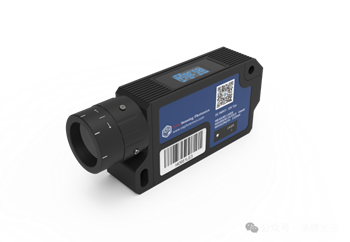Laser Vibrometer: Applications and Use Cases
Laser Doppler Vibrometer (LDV), as the full name suggests, operates based on the Doppler effect. It collects and processes the velocity or displacement of moving objects using frequency difference formulas or phase detection technology. Currently, products on the market are divided into first-generation and second-generation laser vibrometers.
The first-generation laser vibrometers are bulky and heavy, requiring external controllers. They have limited measurement range, high power consumption, and high costs. In contrast, the second-generation laser vibrometers from Osphotonics adopt photonic integrated chips and integrated module packaging technology, reducing the original bulky size by more than 100 times. This makes them ideal for ultra-small installation spaces. Additionally, without the need for external controllers and other equipment, they greatly simplify the testing procedures for engineers.
Moreover, advanced homodyne technology and optimized phase detection algorithms enable direct collection of object vibration displacement, avoiding errors caused by vibration velocity integration calculations. This technology also expands the sampling frequency range, with the minimum sampling frequency reaching 0Hz, meeting the application requirements of ultra-low-frequency vibration testing.

Key Applications of Laser Vibrometers
The non-contact measurement advantage of laser vibrometers allows them to play a role in various fields and scenarios. Beyond the application areas covered by contact vibration sensors, laser doppler vibrometers excel in the following specific scenarios:
1. Vibration Testing in Extreme Environments (High Temperature, High Pressure, etc.)
- Thermal modal testing of aero-engine nozzles
- Vibration testing of automobile engine exhaust manifolds
- Vibration testing induced by fluid in nuclear reactor systems
- Vibration testing of ultra-high-voltage power transmission equipment
- Vibration testing at dam spillway orifices
2. Long-Distance Vibration Testing
- Vibration testing of wind turbine blades
- Landslide monitoring
- Vibration monitoring of bridges and high-rise buildings
- Vibration monitoring of earthquake-prone rock masses
- Vibration testing of subways and high-speed railways
3. Vibration Testing of Mass-Sensitive Structures
- Thin-walled parts: Acoustic radiation research on aero-engine thin-walled plates, damping optimization research on automobile white bodies, vibration testing of household appliance casings or pipelines
- Precision instruments: PCB deformation testing, MEMS vibration modal testing, mobile phone touch vibration testing, loudspeaker diaphragm vibration testing, musical instrument vibration testing
- Soft materials: Damping performance testing of viscoelastic materials, detection of fruit firmness and ripeness
4. Non-Destructive Testing
- Non-destructive testing of egg quality
- Non-destructive testing of fruit texture
- Non-destructive testing of boxed milk
5. Ultra-Low-Frequency Vibration Testing
- Vibration testing during spacecraft launch
- Vibration testing of nuclear fission reactions
- Low-frequency jitter testing during manned spacecraft landing
- Vibration testing of mine headframes, towers, high-rise buildings, railway and highway bridges, and dams
- Crustal vibration testing
6. Ultra-High-Frequency Vibration Testing
- Ultrasonic vibration testing
- High-frequency vibration testing of electromagnetic components
7. Large-Amplitude Vibration Testing
- Vibration testing during space launch
- Vibration testing of aero-engines under high Mach number conditions
- Mine detection testing
- Blasting vibration monitoring
